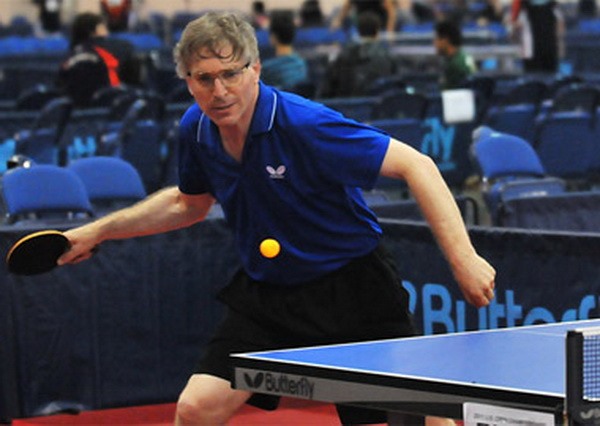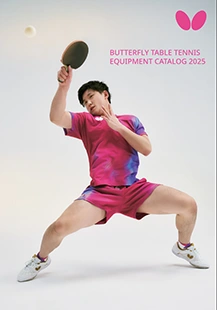Smashing Lobs
Smashing a lob is more difficult than it looks. There are several reasons for this. The height of a lob makes the ball bounce upwards, something you aren’t used to hitting. If it bounces higher than your head, hitting it can be awkward. When it hits the table, it jumps quickly (usually with topspin and often sidespin), making it difficult to hit unless you wait on it. But if you wait on it, it will bounce away from the table, so that you may have to hit it from well off the table, a long way from your target. And if it has spin, it can force you into additional errors. So what should you do?
When you see a lob coming, the first thing to do is to read the spin. If it has topspin, it will jump at you from the table, so don’t get too close. If it has sidespin, it will jump sideways, so move to that side. You should also read the depth, and back up some for a deep one.
You should hit a lob above eye level, either as it goes up or as it comes down. If you are tall, this gives you an advantage. You should practice smashing lobs as they drop until you are consistent. If a lob lands short, you should take it on the rise. This way, you can get such a good angle on the ball that it will be impossible for your opponent to cover both sides.
Many players make the mistake of going for an outright winner even off the best lobs. It is low percentage to try to smash a good lob for a winner against a good lobber. Instead, keep smashing hard, but place the ball, usually to the backhand where most players have difficulty counter-attacking. What you want to do is to force a weak lob, one that lands short, and perhaps with less spin, and put that one away. Often a smash to the middle will force a weak lob. But be careful, you don’t want to let your opponent counter-hit, so usually avoid his forehand side, until you go for a winner.
There are several advanced techniques for smashing a lob. It is a good idea against all lobs (for righties) to raise the right shoulder. This gives you a better angle on the ball. A good way to do this is to start with your weight on your right foot, then, as you transfer your weight forward, lift your right leg off the ground, raising your right shoulder in the process. Make sure you put your weight into all smashes.
Another way of smashing a lob is to jump in the air, so as to contact the ball high in the air. Although this can make you look foolish if you make a mistake, and is considered a poor method by many – yet some do this pretty well. To do it, you back up from the table, take short running start, and jump in the air, sideways to the table, with your right leg leaving the ground first. As you smash the ball, you do a scissors kick – that is, your right leg goes backwards, your left leg goes forward. This helps you thrust into the shot. By jumping into the air, you get a better angle on the ball, and contact the ball closer to the table, but it may hurt your timing. At the very least, this is a spectacular way to smash in an exhibition!
Many advanced players like to smash lobs right off the bounce, sometimes even against deep balls. This takes great timing, but once perfected, your smash becomes almost unreturnable. But it’s easy to miss-time the ball, so it’s usually better to take off the bounce only against a short lob.
You should generally avoid drop shots off lobs unless you think it will be an outright winner. If your opponent gets to it, you’ve let him back into the point. Since it is hard to drop shot a deep lob effectively and a short ball is easy to put away, a drop shot is usually a low percentage shot. However, against a very good lobber who gets into a rhythm and gets ball after ball back, a drop shot is a good change of pace to bring him in, allowing you to attack the next ball when he’s too close to the table.
























